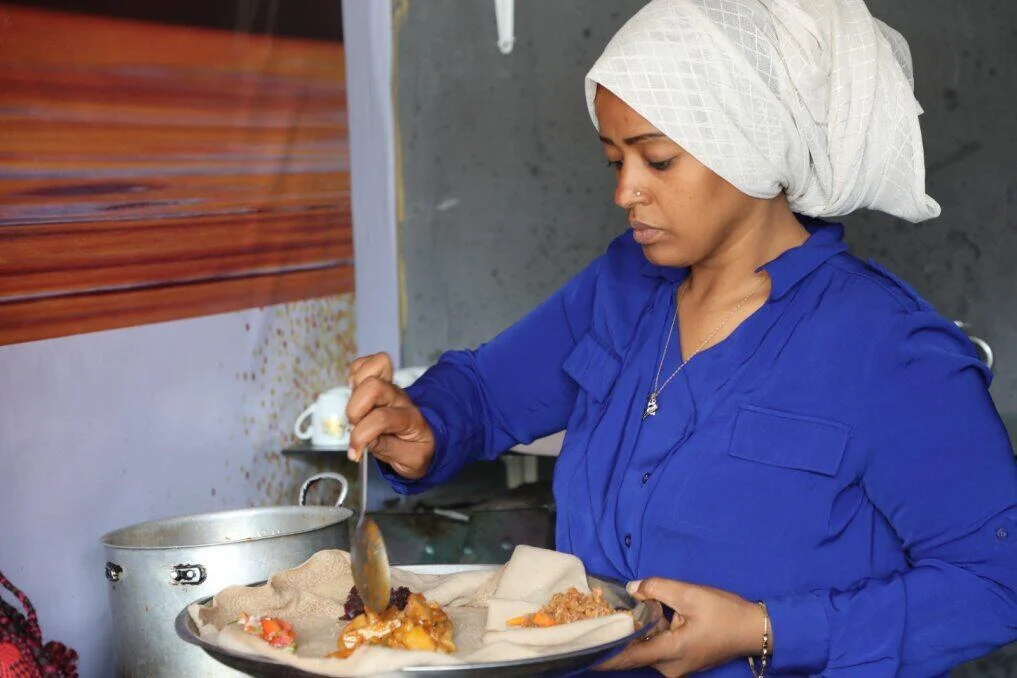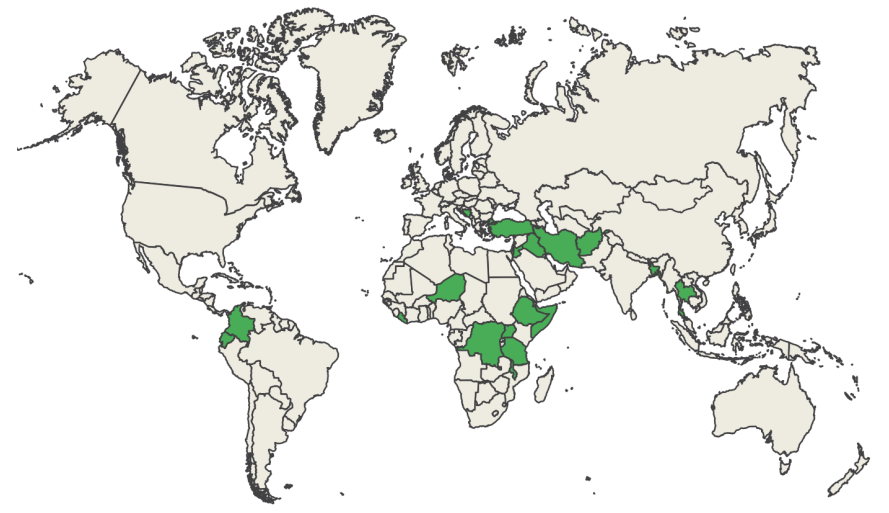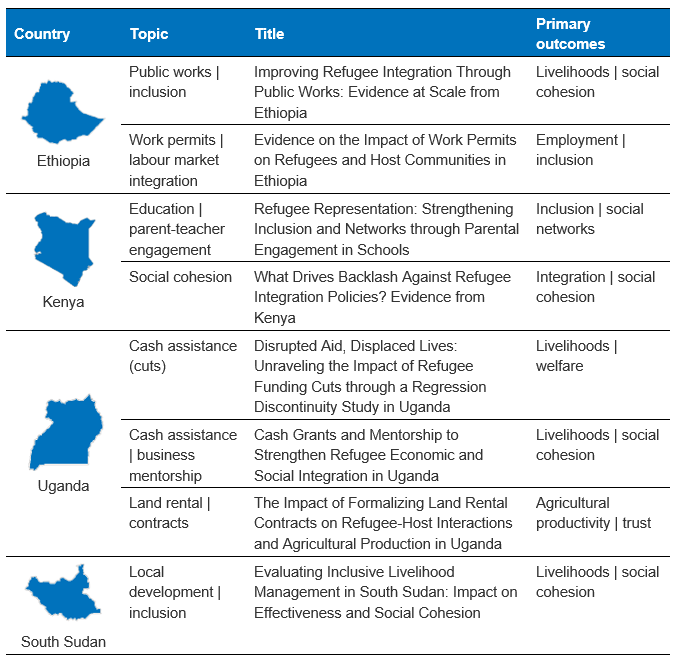Improving Solutions to Forcible Displacement Through Evidence: Learning from Impact Evaluations in East Africa
Editor's Note: This blog is a cross-post that originally appeared on UNHCR's website.
By Jedediah Fix, Senior Economist for UNHCR’s Regional Office East Africa, Ricardo Morel, Director of IPA’s Peace and Recovery Program, and Nessa Kenny, Associate Director of IPA’s Peace and Recovery Program

The East, Horn, and Great Lakes region of Africa is home to 5.2 million refugees and asylum-seekers and 16.7 million internally displaced persons (IDPs) (UNHCR Global Trends 2023). As the war in Sudan continues, more people are fleeing by the day. Today, 8.1 million Sudanese are internally displaced and 1.6 million have sought refuge in neighboring countries.
Most refugees in the region remain protracted, having been displaced for over five years. To effectively support them, we need programs and policies rooted in solid evidence. Equally critical is assessing these interventions and building evidence on how well they help refugees regain their livelihoods with dignity, while also addressing the social and financial costs of displacement for host countries.
A growing number of rigorous impact evaluations on programming for displaced and host populations in the region is giving us the data to do just that. A scoping review by Innovations for Poverty Action (IPA) found that nearly a quarter of the studies published before early 2023 were conducted in East Africa. Findings from the research in Uganda, Ethiopia, and Kenya are revealing critical insights into what works—and what doesn’t—in empowering populations affected by displacement and fostering resilience.
Humanitarian agencies are trying to change. We have invested heavily in data.
To measure and build evidence, including on aspects of forced displacement that have not been traditionally our areas of expertise. On the socio-economic impacts of hosting refugees and internally displaced people. On access to labor markets. On the effect of forced displacement on public finances. All this progress has enabled us to acquire a wealth of knowledge about what is effective and sustainable. It has enabled us to understand what doesn’t work.
Extracts of remarks by Filippo Grandi, UN High Commissioner for Refugees, at the University of Nairobi, June 2024
Key Insights from Evaluations
One key takeaway from these early evaluations is that trained lay community members can effectively deliver mental health and psychosocial support interventions to displaced populations. This result has been replicated in multiple regions, showing that with proper training, local communities can take a leading role in addressing refugees’ mental health needs (Bryant et al. 2022, Panter-Brick et al. 2018, Annan et al. 2017, Bolton et al. 2014, Ertl et al. 2011, Neuner et al. 2008, Bolton et al. 2007, Neuner et al. 2004).
The evaluations also corroborate broader lessons from the evidence base: less frequent but larger cash transfers may be more effective at improving livelihoods compared to smaller, more frequent payments. Grants can help refugees overcome capital constraints to business ownership. However, programs designed to reduce violence against women and children may need to be further adapted to better serve displacement-affected populations.
Figure 1: Existing Forced Displacement Impact Evaluations, by Region and Country (2023)

Source: IPA (2023). Evidence for Responding to Displacement: A Scoping Review of Rigorous Impact Evaluations. Countries where studies were conducted: Afghanistan, Bangladesh, Bosnia and Herzegovina, Colombia, Democratic Republic of the Congo, Ecuador, Ethiopia, Iran, Iraq, Jordan, Lebanon, Liberia, Malawi, Niger, Somalia, State of Palestine, Tanzania, Thailand, Türkiye, and Uganda.
While these evaluations provide valuable insights, further research is needed to pinpoint the most effective interventions for those affected by displacement. As IPA’s Best Bets: Emerging Opportunities for Impact at Scale report highlights, this requires not only identifying programs with positive outcomes but also determining the most cost-effective delivery mechanisms, and building sustainable partnerships for scalable solutions.
Notably, the absence of “emerging” or “established” innovations for displaced populations in the Best Bets report highlights a significant gap in rigorous evidence on the effectiveness of development, peacebuilding, or humanitarian programs tailored to these communities.
Addressing Other Critical Gaps: IDPs and Returnees
Other critical gaps in the current evidence base include those surrounding initiatives targeting IDPs and returnees. While East Africa hosts far more IDPs than refugees, nearly 70 percent of evaluations focus on refugee populations. This disparity limits our understanding of how interventions should be adapted for IDPs, who face different displacement dynamics, vulnerabilities, and opportunities. The same is true for returned refugees. Expanding research to include IDP and returnee-specific programs is essential for developing inclusive and effective strategies for all displaced populations in the region.
The Displaced Livelihoods Initiative stands out as an effort to deepen our understanding of critical areas of displacement research. This collaboration between IPA and the Abdul Latif Jameel Poverty Action Lab (J-PAL), backed by the IKEA Foundation, has already supported 30 new exploratory, pilot, and full studies, including 16 in East Africa. They include:
- In Uganda, researchers are evaluating whether cash grants paired with business mentorship can boost microenterprise success and enhance social cohesion among refugees and host communities.
- In Ethiopia, a pilot study is examining how refugee integration into a national public works program impacts livelihoods and community cohesion. Another pilot in Uganda is testing the impact of formalizing land rental contracts between refugees and host landlords on agricultural productivity and trust.
- Meanwhile, in Kenya, research is underway to see if increasing refugee representation in parent-teacher associations strengthens integration and social networks. (See Table 1 below for a list of these projects).
Scaling up Impact with Evidence through Partnerships
The availability of high-quality baseline data for refugees and host communities in most East African countries offers new opportunities for natural experiments or quasi-experimental evaluations. These approaches are especially useful for measuring the impact of policy changes on the broader population.
In line with the Global Compact on Refugees, it’s crucial that we also use impact evaluation tools to better understand refugee inclusion in national systems and offer clearer insights into the costs and benefits of hosting refugees for governments and communities. IPA, as reflected in its pledges, is committed to supporting rigorous research on sustainable livelihoods for displacement-affected populations and providing decision-makers with the evidence they need for effective and sustainable responses to displacement.
Looking ahead, collaborations like these that bring together practitioners, policymakers, and researchers to identify critical questions and design innovative solutions will be vital. These partnerships will be key to addressing the complex challenges of displacement and fostering resilience within host communities.
Table 1: Displaced Livelihoods Initiative Round 1-2 Projects for East, the Horn, and Great Lakes of Africa Region












